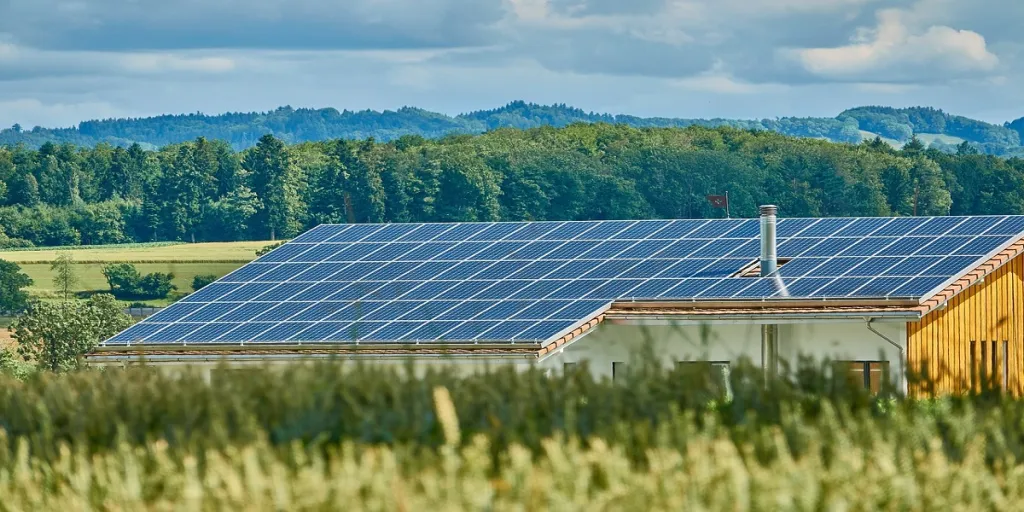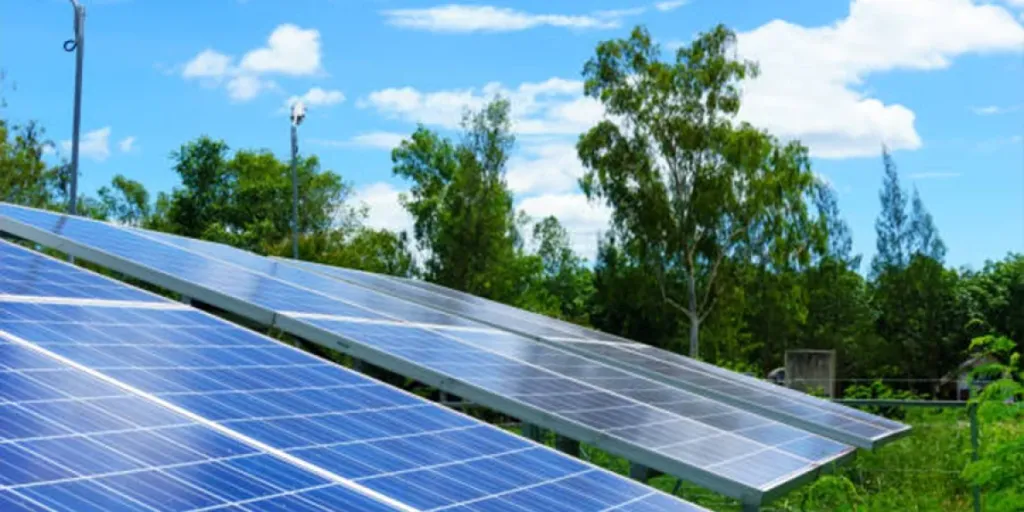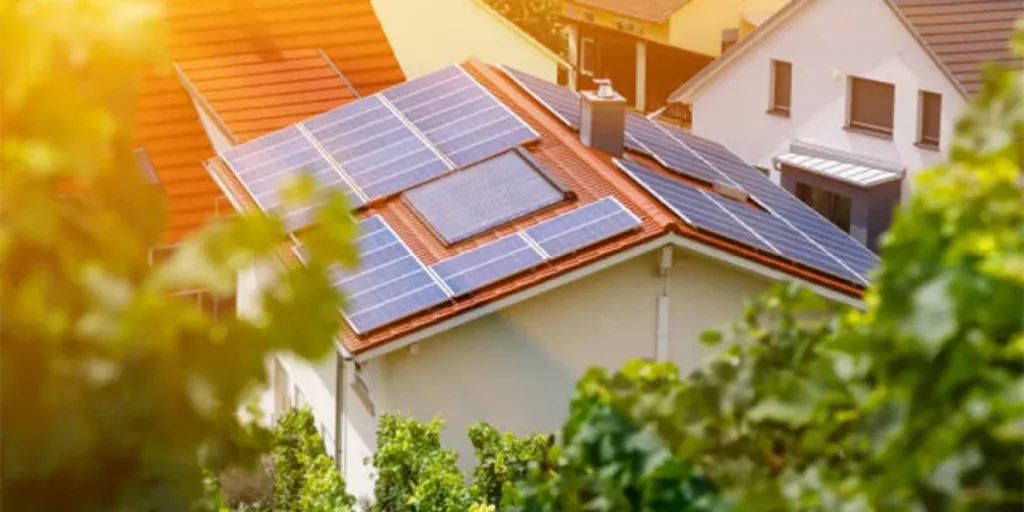A solar cell is a device that converts sunlight directly into electrical energy. This conversion is achieved by utilizing the photovoltaic effect in a semiconductor material, usually silicon. Solar cells are a key component of renewable energy technologies and are widely used in solar power systems.
The following article will give you an overview of the history of solar cell development and will highlight the key efficiency records to date.
Table of Contents
The development of solar cells
Classification
Solar cell efficiency
World records for solar cells over the years
The difference between lab and commercial efficiency
Key trends in solar cell technology
Wrapping up
The development of solar cells
The history of solar cells dates back to the late 1800s, when scientists discovered that certain PV materials could produce an electrical current when exposed to light. But it wasn’t until 1954 that Bell Labs successfully developed the first practical silicon solar cell. In the 1960s, solar cells began to be used for energy supply in spacecraft, spurring further development of their technology.
Commercialization and popularization began in the 1970s, with the emergence of the energy crisis, solar cells received more attention as a renewable energy source. Advances in technology and lower production costs allowed solar cells to begin to be widely used in commercial and residential applications.
Classification
Monocrystalline silicon solar cells: they are made of a single silicon crystal and are more efficient but relatively costly. They typically have a high energy conversion efficiency and a long service life.
Polycrystalline silicon solar cells: made from multiple small silicon crystals, they are slightly less efficient than monocrystalline silicon, but cost less.
Thin-film solar cells: Amorphous silicon or other materials (e.g., CdTe, CIGS) are covered in very thin layers on a substrate. These cells are cheaper, but are typically less efficient than crystalline silicon cells.
New solar cells: These include organic solar cells, chalcogenide solar cells, etc., which may offer lower manufacturing costs and new application possibilities. Chalcogenide cells, in particular, may lead to new breakthroughs.
Solar cell efficiency
Solar cell efficiency is a key metric of how efficiently a solar cell converts sunlight into electricity. Specifically, it is the ratio of the electrical power produced by a solar cell to the power it receives from the sun’s radiation. In other words, it describes how much of the solar energy absorbed by the solar cell is efficiently converted into electrical energy.
The importance of solar cell efficiency
Power output: the higher the efficiency, the more electricity the same size solar cell can produce under the same light conditions.
Cost effectiveness: Increased efficiency reduces the unit cost of solar electricity, making solar power more economically competitive.
Space utilization: High-efficiency solar cells can produce more electricity in a limited space, which is especially important for space-constrained applications such as rooftop solar systems or small installations.
Efficiency improvement process
The development of solar cells can be divided into three stages, each of which has its own specific technological breakthroughs:
Phase I: Crystalline silicon solar cells
The first stage of solar cells is mainly based on monocrystalline and polycrystalline silicon materials. The initial commercialized silicon solar cells had efficiencies of around 6%, but with technological improvements, modern monocrystalline silicon cells have been able to reach efficiencies of more than 22% under laboratory conditions.
Achievement process: The increase in efficiency is mainly due to technological advances in silicon purity, optimization of the lattice structure, reduction of reflectivity, improvement of electrode design, and reduction of energy loss within the cell.
Phase II: Thin film solar cells
These solar cells include copper indium gallium selenide (CIGS), cadmium tellurium (CdTe) and amorphous silicon solar cells. The starting efficiency of these thin film cells is low, generally around 10%, but with the development of materials and process technology, the laboratory efficiency of CIGS and CdTe cells has exceeded 23%.
This is mainly achieved by improving the light absorption ability of thin film materials, improving the carrier transport efficiency and optimizing the cell structure.
Phase III: Calcium titanite solar cells
Calcium titanite solar cells are the fastest growing class of solar cells in recent years. Since its first report in 2009, its efficiency has rapidly increased from an initial 3.8% to more than 33.9% today.
The rapid increase in efficiency is attributed to the unique advantages of chalcogenide materials, such as high light absorption coefficients, adjustable bandgaps and simple fabrication processes.
World records for solar cells over the years
Nascent stage of development (2009~2012)
2009, energy conversion efficiency 3.5%: Japanese scientist Miyasaka used chalcogenide material for dye-sensitized solar cells as a light-absorbing material, but the material was unstable and failed after a few minutes.
2011, energy conversion efficiency 6.5%: Nam-Gyu Park, Sungkyunkwan University, South Korea, improved the technology of chalcogenide solar cells, dramatically increasing the photoelectric conversion efficiency, but the material is still unstable due to the liquid electrolyte still being used, and the efficiency was cut by 80% after a few minutes.
2012, energy conversion efficiency 10%: Oxford University Henry Snaith’s group introduced the transport material Spiro-OMeTA, realized the solid state of the chalcogenide cell, further improved the conversion efficiency and the photovoltaic performance did not obviously decay after 500 hours, demonstrating excellent stability performance.
Initial development stage (2012~2015)
In 2012, Henry Snaith of the University of Oxford replaced TiO2 in the cell with aluminum (A1203), and since then calcite has not only been an absorbing layer of light in the cell, but also served as a semiconductor material for transferring electric charge.
In 2013, chalcogenide was selected as one of the top 10 scientific breakthroughs in Science 2013.
In 2015, energy conversion efficiency of 15%: China, Japan and Switzerland cooperated to make large-area (working area of more than 1 CM2) chalcogenide solar cells, which were certified by international authorities.
Rapid development stage (2016-present)
2016, energy conversion efficiency 19.6%: Prof. Gratzel’s group at the Swiss Federal Institute of Technology in Lausanne increased the certified efficiency to 19.6%.
2018, energy conversion efficiency 23.7%: the Institute of Semiconductor Research of the Chinese Academy of Sciences proposed organic salt passivation of chalcogenide surface defects, successively increasing the conversion efficiency to 23.3% and 23.7%.
2021, energy conversion efficiency 29.8%: Helmholtz Center Berlin (HZB) developed chalcogenide tandem battery conversion efficiency of 29.8%, exceeding the efficiency limit of heterogeneous junction (HJT), TOPCon and other crystalline silicon technology.
2022, energy conversion efficiency of 31.3%: the Ecole Polytechnique Fédérale de Lausanne (EPFL) and the Swiss Center for Electronics and Microtechnology (CSEM) have created chalcogenide-silicon stacked photovoltaic cells with a conversion efficiency of 31.3%.
2023, energy conversion efficiency 33.9%: The efficiency of the crystalline silicon-calcite stacked cell independently developed by China’s LONGi Green Energy Technology Co. reaches 33.9%, surpassing the Shockley-Quayther (S-Q) theoretical efficiency limit of 33.7% for single-junction cells.
The difference between lab and commercial efficiency
Laboratory efficiency and commercialization efficiency are two different metrics for evaluating solar cell performance, and there are some key differences between them:
Laboratory efficiency
Definition:
Laboratory efficiency is the maximum efficiency of a solar cell measured under idealized laboratory conditions. This usually involves standard test conditions (STC) such as a specific light intensity (1000 W/m²), a specified spectral distribution and a fixed temperature (usually 25°C).
Characteristics:
Laboratory efficiencies are typically measured under optimized test conditions that are set to maximize cell performance.
Such efficiencies are usually measured for individual cells or small cell samples, rather than for an entire solar panel or system.
Laboratory efficiencies reflect the upper limit of a solar cell’s technical potential.
Commercialization efficiency
Definition:
Commercialization efficiency is the average efficiency of solar cells or solar panels that are actually produced and put into market use. It is the level of performance that consumers can expect when purchasing and using a solar cell system.
Characteristics:
Commercialization efficiency is typically lower than laboratory efficiency because it must take into account a variety of practical factors in the mass production process, such as material variations, manufacturing tolerances, and long-term reliability.
This efficiency is measured under conditions closer to actual operating conditions, including varying temperatures, light conditions, and possible shading.
Commercialized efficiencies are more reflective of the actual performance of solar cells in everyday use.
Differences
Efficiency: Laboratory efficiency is usually higher than commercial efficiency because it is obtained under idealized conditions.
Application: Laboratory efficiency is more used in research and development to promote new technology breakthroughs; while commercialized efficiency focuses on actual product performance and market competitiveness.
Cost: When commercialized efficiency is achieved, the cost of production and the feasibility of large-scale production also need to be considered, which is usually not a major consideration in the determination of laboratory efficiency.
Key trends in solar cell technology
Future breakthroughs in solar cell technology are centered on improving efficiency, reducing costs, enhancing durability and adapting to the needs of diverse applications. The following is a detailed outlook on these trends:
Increased energy conversion efficiency
Multi-junction solar cells: By stacking semiconductor materials with different bandgaps, multi-junction solar cells can absorb a wider band of sunlight, thereby improving overall efficiency. More triple-junction and even quadruple-junction solar cells may be seen in the future.
Combination of chalcogenide and silicon: The combination of chalcogenide solar cells with conventional silicon cells to form hybrid or stacked solar cells may offer higher efficiency and better spectral response.
Reducing costs and improving sustainability
Scale-up production: The cost of manufacturing solar cells is expected to decrease further as the technology matures and scale-up production is realized.
Renewable materials: Research and development of more environmentally friendly, recyclable materials and reduced reliance on rare and toxic materials will help improve the environmental sustainability of solar cells.
Enhanced durability and reliability
Improve long-term stability: Researchers aim to improve the long-term stability and weathering resistance of solar cells to cope with a variety of environmental conditions and extend their lifespan.
Self-healing materials: Develop solar cell materials that can self-repair minor damage to maintain long-term high efficiency.
Wrapping up
The efficiency improvement of solar cells has entered a rapid stage, especially with the practical utilization of chalcogenide cells that will bring new vitality to this field. Continuous improvement in solar cell efficiency is a key factor driving the development of solar technology and market adoption.
Through innovations in materials science, advanced cell design and progress in manufacturing technology, solar cells are becoming more efficient, cost-effective and reliable. With further improvements in efficiency and the application of new technologies, we can expect that they will provide more reliable and cost-effective energy solutions for homes and businesses.
Finally, head to Alibaba.com to explore a range of renewable energy trends and to browse a list of product offerings, including solar cells for home and business use.




